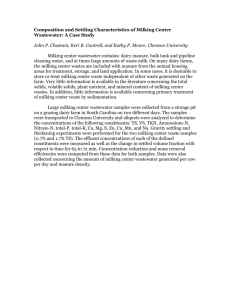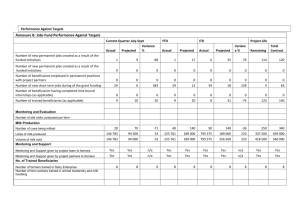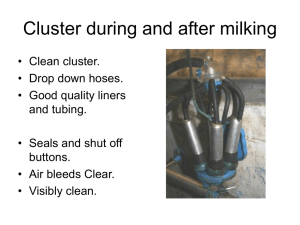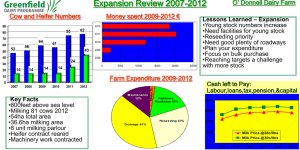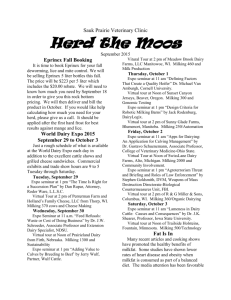Sanitary practices to be observed in producing safe milk
advertisement
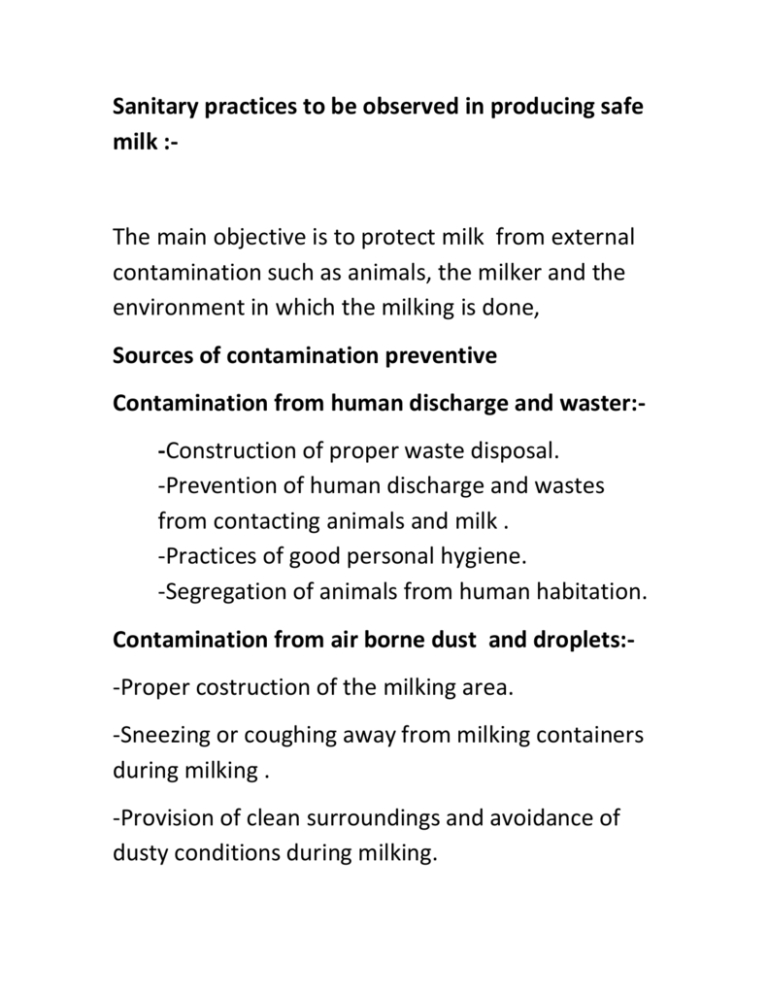
Sanitary practices to be observed in producing safe milk :- The main objective is to protect milk from external contamination such as animals, the milker and the environment in which the milking is done, Sources of contamination preventive Contamination from human discharge and waster:-Construction of proper waste disposal. -Prevention of human discharge and wastes from contacting animals and milk . -Practices of good personal hygiene. -Segregation of animals from human habitation. Contamination from air borne dust and droplets:-Proper costruction of the milking area. -Sneezing or coughing away from milking containers during milking . -Provision of clean surroundings and avoidance of dusty conditions during milking. Contamination from animals bodies, hides, udder and teats :-Clipping, brushing, cleansing and sanitizing before milking . -Milk containers (contamination from milking utensils and dirty water) :-Proper washing and storing of milking cntainers. -Using proper and easily cleanable utensils , -Using only safe water for washing ad cleaning. Milk handlers and contamination from milkers their clothing:-Keeping the milkers level of personal hygiene high. -Washing of hands with detergents before milking. -The milker should always wear clean garments while milking. Cow and contamination from diseased animals :-Detecting and isolating affect animals . -Veterinary inspection and supervision of animals. -Treatment and vaccination of animals. Sanitary requirements for dairy farm milking barn,stable or cowshed . Construction:-The areas used for milking purposes shall. -Have floors constructed of concrete or any other impervious materials and provided with proper drainage. -Have walls and ceiling which are smooth and painted in good repair and dust proof. -Have separated stalls or pens for calves and bulls. -Be provided with natural and or artificial light. Sufficient and well distributed in the working area . Not be overcrowded but properly spaced . -Be provided with sufficient air space and air circulation. Cleanliness :Every thing with the milking barn, stable or cowshed should be kept clean and tidy.Theses rooms should be free of threshing,filth and animal dropping, They should be kept free of dust and the floor should be dry, clean and fly and rodent proof. The interior and the surroundings of the barn, stable or cowshed should be kept clean and tidy. The walls, celling , windows and equipment should be free of filth,litter and vermin.Animal dropping and manure should be collected and disposed of properly. Milk house or milk room :Construction :-The milk house or room (moderate size )shall. -Be provided with smooth ,impervious,well graded and of good repair concrete flooring. -Be provided with smooth, good repair and well painted walls and ceiling . -Have adequate nature or artificial light an adequate an a proper ventilation system . -Be provided with proper washing facilities. Be used for purpose other than milk house operation -Be provided with a proper stage for milk containers and utensils. -Be provided with proper storage for milk and cooling devices. Cleanliness :Every thing within the milk house should be kept clean and tidy,free from filth and animal droppings. It should be kept free of dust and the floor should be dry ,clean and rodent proof. Utensils and Equipment :Construction :All containers,utensils and equipment used in the handling,storing and transporting of milk shall: -Be made of smooth, non-absorbed, corrosion resistant material. -Be constructed in a manner that cab be easily washed and cleaned. -Be in good repair. -Be seamless and free of cracks. All utensils and equipment used shall: -Be cleaned after each usage. -Be washed thoroughly after each usage. -Be sanitized before each usage. -Be protected from contamination and mishandling prior its usage. -Be stored free from flies and other vermin when not in use. Hygienic production of milk : The use correct and sanitary milking methods is an importmant step in protecting clean milk . Correct milking method will reduced udder injuries and mastitis infections, increase milk production result in cleaner milk and reduce milk contamination. There are two types of milking methods, namely manual (milking by hand) and mechanical ( milking by milking machine), Steps of milking milk hand :-Prepare all milking matrials prior to milking. -Massage and wash teats and udder thoroughly with cloth or piece of towel dipped in warm water, if possible in warm bactericidal (chlorine) solution. -Draw out foremilk in strip cup squeezing a few hand squirts from each teat. -Fore milking helps detect an abnormal milk resulting from a diseased or injured udder. -Before staring milking be sure that milkers hands are clean and dry. -Milking is done carefully without letting any foreign objects or vermin enter the open milking jar . -After finishing milking transfer the milk into a clean container by straining and immediately keep or the container at a temperature of 10c or less.
